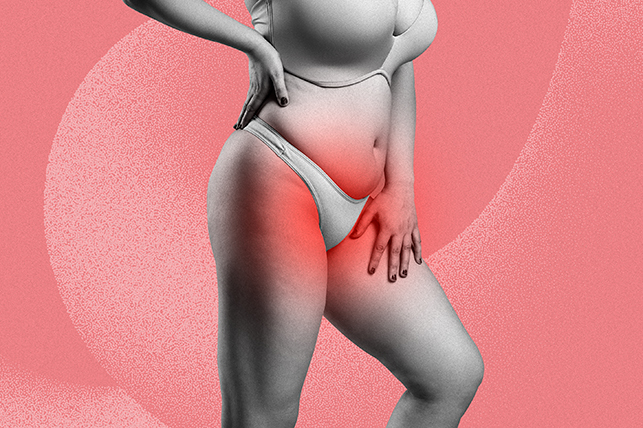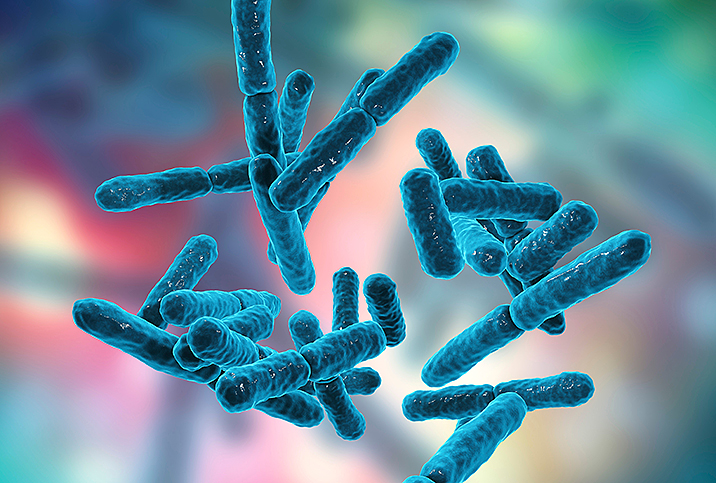Your Yeast Infection Isn't Dangerous, Just Unpleasant

A yeast infection is an extremely common condition caused by the overgrowth of the fungus Candida. Although anyone can get a yeast infection, it affects mostly women in the form of a vaginal yeast infection.
As many as 75 percent of women get a vaginal yeast infection at least once in their life, and it's the second-most common vaginal infection in the United States, so anyone with a vagina faces the likelihood of developing a yeast infection at some point.
What is a yeast infection?
"A yeast infection is a common name for vaginal candidiasis," said Dr. Kiarra King, M.D., an OB-GYN in Melrose Park, Illinois.
Yeast infections can also be referred to as thrush or vulvovaginal candidiasis. Although it's less common, men can get yeast infections, too.
From a health perspective, yeast infections aren't dangerous. However, they can be very unpleasant. Yeast infections are notorious for causing itching, discomfort and a cottage cheese-like vaginal discharge. They can be easily treated with over-the-counter antifungal medications.
It's also worth noting that although unprotected sex can trigger a yeast infection, yeast infections are not sexually transmitted infections (STIs).
Keep on reading to learn more about the symptoms, causes and treatment for vaginal yeast infections.
Yeast infection symptoms
A yeast infection can cause unpleasant symptoms, ranging from mild to severe. Common yeast infection symptoms include:
- Vaginal itching and/or swelling
- White, clumpy vaginal discharge that has the consistency of cottage cheese and is odorless
- Vulval redness and/or soreness
- Pain or discomfort during sex
- Burning or stinging when you pee
How is a yeast infection diagnosed?
These symptoms can also be caused by other infections, so it's essential to not self-diagnose or self-medicate. Instead, visit your doctor or OB/GYN, who can perform a pelvic exam and take a swab test.
It's especially important to speak to your doctor if you start noticing yeast infection symptoms while pregnant.
Causes of yeast infections
Yeast infections are caused by a fungus called Candida, which can present in the gut, mouth, skin and vagina, and doesn't usually cause issues. Up to 20 percent of people have Candida present in their vagina without causing symptoms.
"The type of yeast that causes vaginal infections most often is Candida albicans, [but] there are others, like Candida glabrata," King said.
Our body usually keeps the fungus in check, but sometimes it can overgrow and lead to a yeast infection.
"There is usually a small amount of yeast that contributes to the normal vaginal flora or microbiome," King explained. "Healthy vaginal flora is composed of many bacteria and other species. 'Good bacteria,' such as lactobacilli, help to keep less desirable bacteria at bay. However, if the microbiome is disrupted in any way, there can be an imbalance, which, ultimately, can promote the growth of yeast or other bacteria."
It can be difficult to pinpoint the exact cause of a yeast infection, but there are a few actions, such as having sex (but keep in mind that a yeast infection is not an STI) and taking certain antibiotics, that can trigger the overgrowth of Candida.
"When someone is prescribed an antibiotic for a UTI [urinary tract infection], the medicine doesn't just work in the bladder," King said. "Antibiotics not only get rid of pathogenic or 'bad' bacteria, but they can also eliminate the 'good' bacteria. When this occurs in the vagina, then the normal balance is disrupted and yeast and other bacteria can overgrow."
Risk factors for yeast infections
Some risk factors can increase your chances of getting a yeast infection, including:
- Having a weakened immune system (for example, having cancer or HIV)
- Untreated diabetes
- Pregnancy
- Some medications, including some forms of hormonal birth control
- Douching or overusing feminine hygiene products
- Having had a yeast infection in the past
Treatment for yeast infections
Treating a yeast infection is usually pretty straightforward.
"Doctors typically prescribe antifungal treatments as the first-line treatment for a yeast infection. This can come in many forms, including cream, ointment, suppository or an oral pill called fluconazole," said Krystal Thomas-White, Ph.D., a senior scientist at Evvy, a provider of at-home vaginal microbiome tests based in New York City.
Other types of antifungal treatment include clotrimazole, miconazole and tioconazole.
You can buy antifungal treatments without a prescription, but you should always speak to your doctor before trying to treat a yeast infection on your own.
Some research also suggests that boric acid can help treat vaginal yeast infections when antifungal medications haven't worked, but you should speak to your doctor before taking boric acid.
In some cases, yeast infections can come back or treatment can fail.
"Like many other vaginal infections, yeast infections can be challenging because there are so many other factors at play," Thomas-White said. "You may not be using the most effective treatment for the type of Candida that's causing your yeast infection. While up to 90 percent of yeast infections are caused by an overgrowth of Candida albicans, there are other species of Candida such as C. glabrata and C. tropicalis. Standard antifungals are not as effective in treating those strains."
If your symptoms don't go away after treating the yeast infection, you may have a different kind of infection or the treatment has failed. As frustrating as that is, just know that untreated yeast infections don't have long-term consequences.


















